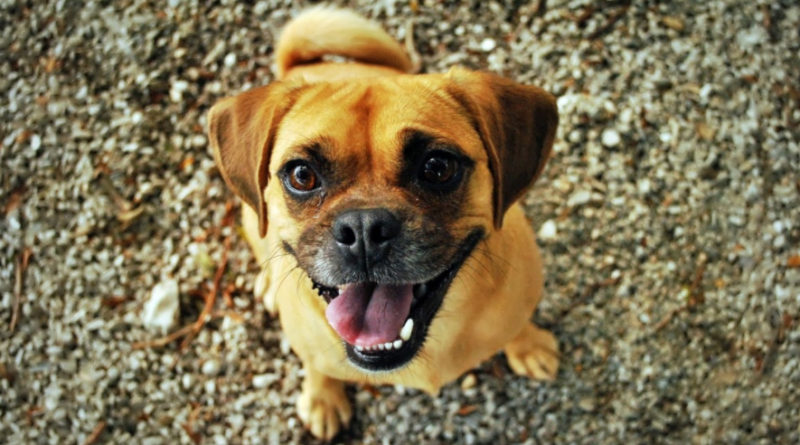Puggle Dog Breed Temperament, Diet and Training
If you love both beagles and pugs, the Puggle is the dog for you. This crossbreed is a joy to have around the home and is a loving companion.
A dog is a lifetime commitment, so you should know how to look after it well. Here’s what you need to know about the Puggle and its many needs.
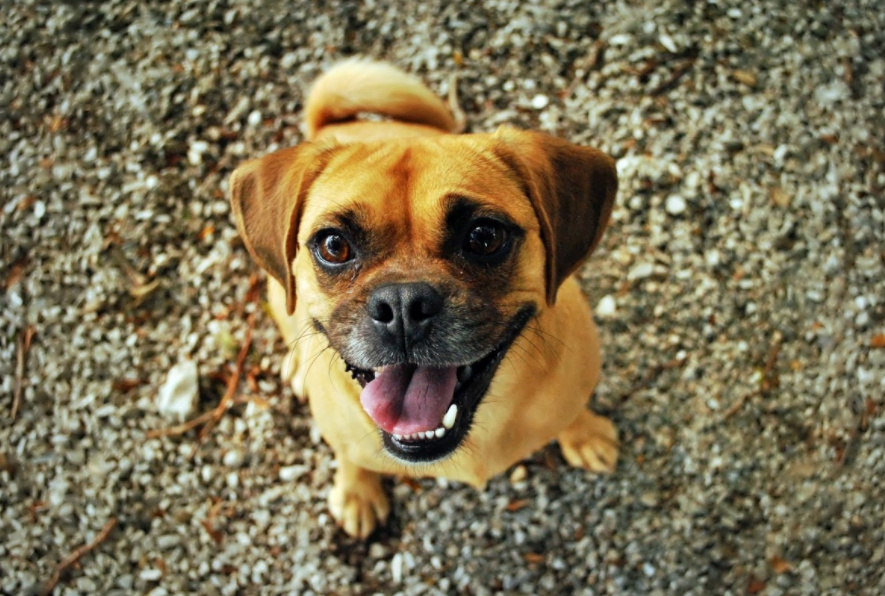
Puggle History
The Puggle is a relatively new dog breed, but it has made waves. It has become one of the most sought-after crossbreeds today.
One of this dog’s parents is the Beagle, a small hound related to the Talbot that people bred for hunting. Its other parent is the Pug, nurtured as a companion for Chinese and European royalty.
Wallace Havens, a breeder from Wisconsin, first bred the Puggle in the 1980s. He came up with the name Puggle and registered the dog with the American Canine Hybrid Club.
Havens was the first official Puggle breeder, but there were others before him. The dog came about in the 1980s when U.S. breeders tried to create new dogs. By 2000, it became popular with pet owners who wanted unique, designer dogs.
Major Kennel Clubs don’t recognise the Puggle as a breed. Many people feel that it’s a crossbred mongrel.
Puggle Appearance
The Puggle, having Pug and Beagle parents, will look like both. Since both its parents are relatively small-sized, it isn’t a large dog.
Beagles are bigger than Pugs. Therefore, when breeding them, it’s best that the male is the Pug and the female, the Beagle. This arrangement will lessen birthing complications.
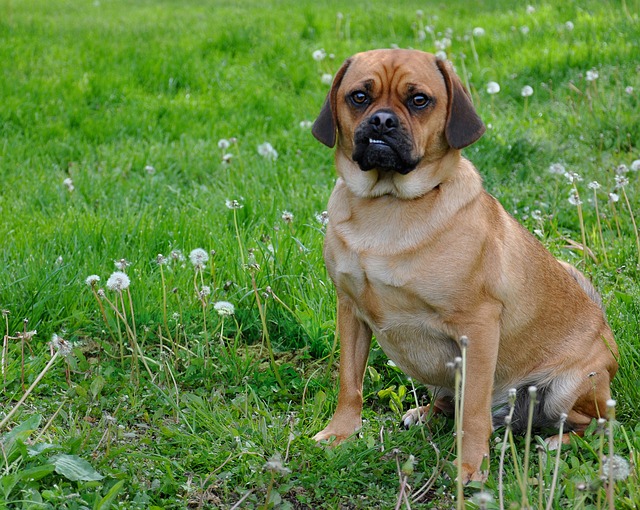
Puggles weigh between 7kg and 14kg ( 15-30 pounds) and measure from 25-38 cm (10-15 inches) in height. Dog enthusiasts have compared them to miniature mastiffs.
So, how does this little dog look? It has the wrinkles the Pug is famous for and the Beagle’s long nose. Note that Pugs, with their flat faces, are Brachycephalic dogs. Their compressed noses make breathing difficult. So, having the Beagle parent’s nose helps it minimises respiratory problems.
Puggles, like all, designer dogs vary in shape, coat colour and size. But all of them have one thing in common – they have a balance of traits of both purebred parents.
The first generation of Puggles may possess head that may differ from dog to dog in size and shape. Some may have fuller, larger skull and resting may thinner and smaller heads.
First generation Puggles have heads that vary in shape and size. Some skulls are large and round, while others are thin and small. Puggles may have tails that are curly like a Pug’s or long and straight like a Beagle’s.
A Puggle’s coat may have the colours of those of either the Pug or Beagle. Like the Pug’s, it may be black, fawn or tan. It could be a blend of brown, lemon, white or red, like a Beagle’s. Coat colours may vary, but hairs will be smooth since both parents’ are. Tan and fawn Puggles with black masks are the most common. The black colour will vary in degree.
Many Puggles will have long bodies since their Beagle parents’ are not short. They will have Beagles’ floppy ears as well.
Some Puggles, of course, will have thick and short bodies like Pugs’. They may also have flat, Brachycephalic faces like their Pug parent’s. Note that cross-breeding may result in small sizes. Some Puggles weigh half as much as they should, at about 3.5kg
Puggle Temperament
Buyers of crossbred dogs often wonder about their temperaments. The Puggle has the traits of both Pugs and Beagles.
- Affectionate
The Puggle, with beagle and pug parents, is a quiet, gentle dog. It’s highly affectionate. It’ll give you a few licks as soon as you step into your home after a hard day of work.
- Keen
The puggle, having a hound as one of its parents, has keen senses. Like its Beagle parent, it’s a good hunter of vermin. Don’t be surprised if it drops a bird or mouse at your feet as an ‘offering’.
- Intelligent
Like both its beagle and pug parents, the puggle is an intelligent dog. House training it is no worry because it has sharp beagle instincts.
- Wilful
Note that the Puggle has a mind of its own, as highly intelligent animals often do. Hence, it’s a little stubborn. Getting it to obey commands may take some patience.
- Gentle
The Puggle, like all pugs and beagles, has a gentle, unassuming temperament. It seldom barks unless necessary. It tends to make itself scarce after greeting your house guests.
- Loyal
Like many dogs, the Puggle is a loyal fellow who will stay faithful to its owner. However, it gets along with anybody who comes its way.
- Lively
The Puggle is energetic and needs plenty of engagement. Quiet as it is, you’ll need to keep it occupied with lots of activities and exercises.
- Joyful
The Puggle is always in a good mood. It’s ever ready for new adventures and has a constant spring in its step. Its sunny disposition makes it a welcome companion.
- Playful
The Puggle is always up to some antic of another. It loves games, including those that involve kong toys. Let it enjoy itself and develop its senses with Hide-And-Seek games.
- Sweet-tempered
The Puggle is a good-natured dog with a calm temperament, much like its beagle and pug parents. It loves everyone around him and seldom becomes aggressive.
- Watchful
Its kind nature doesn’t mean that it’s not protective. Puggles are ever-watchful and seek to protect their owners.
Note that the Puggle makes an excellent watchdog, and will tell you when anyone approaches. However, it probably won’t make the right guard dog because it’s too friendly.
Choosing A Puggle Puppy
Many people make the mistake of choosing the puppy that runs up to them, but that leads to them picking the bold ones.
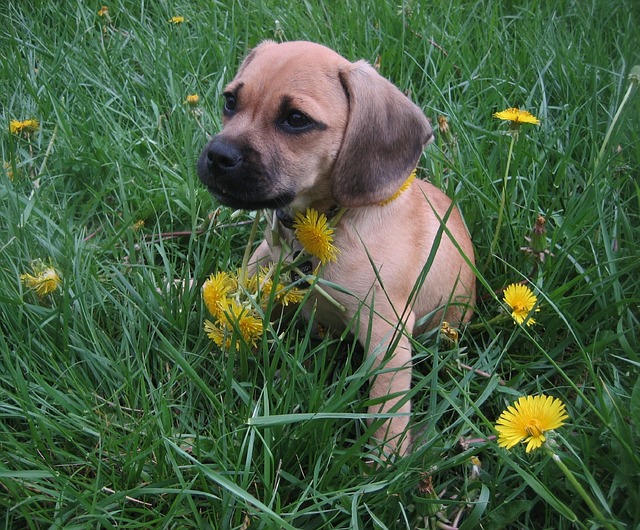
These puppies win you over with adorable growls and energetic antics, but training them is a task. Here’s how to choose a puppy with lots of energy and a balanced temperament.
- Evaluate the litter
First, assess the litter. If all the puppies look at you suspiciously, it’s probably not wise to pick a puppy from it. Pick a puppy that trusts you. Shy puppies grow into timid adults.
- Assess the puppies individually.
Then, evaluate them one-by-one. Find out how each puppy behaves without its littermates. A bold puppy without its friends to support him will be surer of itself when its own its own.
- Children
Do you have children at home? You’ll have to choose a puppy that’s comfortable with kids. A puggle puppy is perfect for your family if you have children because it’s kid-friendly.
- Work
Do you spend hours at work or commute a lot? You may not be able to accommodate a puppy. Your job shouldn’t involve too much travel or too many commitments after office hours.
- Lifestyle
Are you a couch potato? You may have to consider your ability to commit to a new puppy.
Sedentary dogs will make ideal companions if you live a quiet lifestyle. That said, all dogs require exercise. Puggle puppies are gentle and unassuming but do need attention.
- Living Space
Is your living space cramped? You may not have room for a new dog. Puggle puppies are small but do need to stretch like other dogs. If you have a lot of clutter, spend some time getting rid of it before welcoming him.
- Available help
A puppy is a huge commitment. You’ll have to make arrangements for its care if you work long hours, or when you go away on holiday. Make sure that you have reliable dog sitters on hand to help whenever necessary.
- Affordability
Of course, you’d have to consider if you can afford a new puppy. Besides its price, you’d have to think about its nutritional, exercise and medical needs. All dogs, including the puggle, are prone to health conditions they may have inherited from their parents. So, veterinary bills can make caring for them costly.
- Energy
Observe puppies before buying them. Puppies which come to the front to greet you while pushing others away show signs of dominance. Those who shy away from you are submissive. You want a dog that’s confident, but not dominant.
How to Stop Annoying Puggle Habits
Like all dogs, your puggle may display annoying behaviours occasionally. Here’s how you can keep them in check.
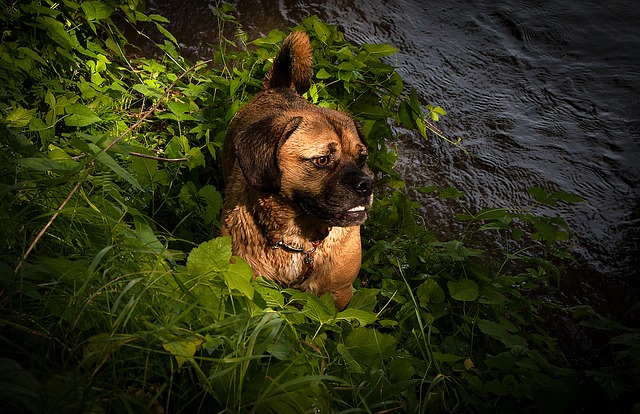
- Barking
Your dog may bark whenever something excites it. This behaviour may be annoying to members of your household or people in your neighbourhood.
To control the barking, find out what causes it. Your dog may be stressed or bored. If so, exercise will keep it engaged. If your dog barks to get a response from you, e.g. a treat, ignore it. Reward it when it shows quiet behaviour.
- Jumping
Your dog may jump up at you or anyone who enters your home. But he may end up hurting someone, e.g. a small child. So he must learn that jumping is not acceptable.
If your dog is prone to such behaviour, ignore it until it calms down. Once it has, give it a treat for behaving well.
- Chasing
Your dog may chase cars and pedestrians. You must stop this behaviour for your dog’s safety and that of others.
Make sure that your dog understands the ‘sit’, ‘stay’, and ‘come’ commands. Once it does, start training it indoors. You can give it the chance to chase objects in appropriate settings.
- Chewing
All dogs chew. They show this destructive behaviour when they feel bored
To reduce your dog’s mischief, give it lots of exercises and mental stimulation. Replace the object that it chews with a chew toy.
- Begging
Your dog may have a habit of asking for food. Don’t acknowledge the behaviour, even by saying ‘no’. Doing so tells your dog that it can have its way. If you must give it food, wait till you’ve finished your meal. Put the extras into his food bowl before giving them to it.
- Digging
Put a feisty dog in a garden, and he’ll dig. To minimise digging behaviour, give your dog a space in the garden where it can make a mess. Train it not to dig beyond the area.
- Soiling
House soiling may be the most annoying of all dog behaviours. It’s also costly and may lead to you having to replace parts of the floor. Your dog may soil because it wants attention or lacks proper training.
To prevent this, confirm with your vet that it’s not soiling because of a medical condition. Make sure that you spay it because territorial marking often happens with unsterilised pets. Make sure that it has its breaks and walks.
- Nipping
Dogs typically nip at their owners to indicate a desire to play. They also do so to get attention.
Dogs that interact with other dogs don’t usually nip. You can cry in pain if your dog bites too hard and not interact with your dog for a while.
- Aggression
Dogs that behave aggressively toward other dogs are often over-excited, fearful, or too protective of their owners.
Stay calm an assertive when your dog is in front of other dogs. Avoid situations where there may be possible confrontations.
- Separation Anxiety
Separation anxiety causes heartbreak and can make leaving your dog difficult. It may also lead to destructive behaviours like chewing, soiling and excessive barking.
Play a little music before you leave your home. Say goodbye to your dog but don’t make a fuss. Your dog will learn to trust that you are away only for a short time.
Housebreaking a Puggle
Embed from Getty Images
Housebreaking is one of the most painful headaches of dog ownership. Here’s how to ease it.
- Gradual assimilation
The first method is to get your puppy used to his ‘spot’ gradually.
To do so, lay newspaper over the area where you want it to do its business. Praise and reward it when it does so successfully. Remove some paper until it learns to ease himself in the targeted area.
- Use a Crate
Crate training makes vet visits, and long car journeys less of a hassle. Getting your puggle puppy accustomed to one is best.
Crates are great for house training because they make the dog feel secure. Also, dogs are clean creatures and don’t like lying or stepping on urine-soaked newspapers.
Choose a crate that’s of the right size. It should be big enough for the dog to stand, lie down, and turn around. It shouldn’t be too large because the dog will feel that it’s alright to use a corner to ease itself. Remember that the aim of using a crate is to give the dog the feeling that it has its space.
Your dog will learn to indicate that it needs to go. Whining and scratching will tell you that it needs to ease itself. You can then take it outside.
- Puppy Pads And Paper
Paper and puppy pads are tricky training methods to master because they give the dog two different eliminating options. He can learn to do so indoors and in specific areas outdoors. But they are useful when it’s difficult to take a dog outside to ease itself.
For a start, your puggle puppy can learn to relieve itself in a spot in the home. As it grows, it can learn to do so it specific places outside.
- Create A Schedule
Creating a schedule for your dog to ease itself is critical to housebreaking success. It gives your puggle puppy the time and space to relieve itself, the right way.
Dogs can control their bladders but ten or eleven hours is a lot of time for any living creature to hold it. Young puppies can control their bladders for up to six hours. They’ll usually need to go early in the morning and again at night. Many will ease themselves after eating, drinking, or chewing on a bone.
- Observation
The guidelines above are generic. Remember that each dog is different. Watch your puppy and note when it becomes urgent. Some dogs may have erratic potty habits.
- Controlling the Diet
A puppy’s digestive system is immature, so it’s important to regulate its feedings. Break them up and give your dog food of the highest quality. Whatever diet you choose, make sure that it agrees with your Puggle pup.
Puggle Grooming
Embed from Getty Images
Every dog has specific grooming needs. Here’s what it takes to groom a short-coated Puggle.
- Brushing
Puggles, like their Beagle parents, have short coats. You’ll spend more time brushing your dog than you would on other aspects of grooming. Besides keeping its hair clean, it removes dead hair and stimulates natural oils.
Because they are short-coated dogs, Puggles are easy to maintain. They shed, so they’ll require frequent brushing. Make sure that you brush the dog all the way down to the skin. Use a slicker brush if you need to detangle its hair. Use a rubber curry brush to remove loose hair.
- Bathing
Dogs with short coats have a distinctive odour and need regular bathing. Their coats should smell fresh, look shiny, and have no loose hair.
After brushing your dog, put a rubber mat in the tub to give yourself secure footing, and fill it with three to four inches of water. Wet the dog with a hose, pitcher or unbreakable cup. Massage in the shampoo, saving the dog’s head for the last. Rinse thoroughly, taking care not to let the soap drip into the eyes.
Wipe the dog dry. The Puggle is a short-coated dog, so make sure that you pat it dry. Use a dryer to remove loose hair. The dog should be fresh-smelling without stray hair.
- Hair Clipping
Giving a Puggle a haircut is easier than you think it is. All you need is the right clipper, trimmer and scissors.
Get rid of excess hair with trimmers or a pair of blunt scissors. Brush the coat to remove tangles and mats. Use a trimmer to even out the hair on the chest, paws, and tail. The dog’s fur should feel flat against the head when you have finished.
- Nails
Many dog owners don’t dare to trim their dog’s nails because it may mean cutting into the quick. But with a little alertness and care, nail-cutting can turn into a hassle-free experience.
Dogs themselves feel fearful of nail trimming, so give yours plenty of positive reinforcement. Press your dog’s paws gently to let it get used to getting its nails clipped. Don’t attempt to trim everything in a single sitting. Do it in a few sessions, gradually cutting more of your dog’s nails off each time.
- Eyes/ears
Dogs which tear frequently may need regular clearing around the eyes. Doing so will prevent infections.
Dogs with hound genes, like the Puggle, should have their ears cleaned regularly. Moisten a cotton ball with mineral oil and wipe your dog’s ears, being careful to avoid the canal. Trim bushy growth in the ear with scissors.
Don’t use Q-tips, which may damage the inner ears. Use a trimmer to trim the hair around the eyes and ears. Wipe down your puggle weekly to prevent infections.
- Teeth
Many dog owners don’t realise how important it is to brush their dog’s teeth. Dogs with tiny teeth or on special diets are especially prone to dental problems, but frequent brushing can conquer these issues. Weekly brushing prevents gum disease.
Questions To Ask About Puggle Breeding/Breeders
Embed from Getty Images
Are you thinking of breeding your Puggle? Ask yourself the following questions before creating a new litter of puppies.
- Can I ensure top quality pups?
All dogs, even purebreds, have defects. You should eliminate these before breeding your dog.
Make sure that the dam and stud Puggles you choose are of good quality. Examine them before allowing them to breed. Make sure that their skin, eyes, coat, and paws are in top condition.
- Cost
Prepare yourself to bear expenses for breeding dogs. Healthcare, shots and examinations for quality are incurrable costs. Unexpected birthing problems may require Ceasarians, which are expensive as well.
- Sales/Rehoming
Make sure that you’re able to find homes for all the new puppies. Get an idea of who may want to take them in before even breeding the dam. Also, remember that you’d have to care for them for the first few months of their lives.
- Birthing Problems
Some dams are not natural moms and abuse their young ones. Remember to keep an eye on the bitch after birth.
- Time
Top breeders share that they usually spend about 130 hours during the birth of the litter. The dam cannot be alone during the process.
Mom will need feeding, while her pups will need cleaning, nutrition and socialisation. You may have to take time off work to care for sick puppies or a dam who won’t look after them.
- Humane Responsibilities
Make sure that you send the puppies to loving homes. As a breeder, you’re responsible for their lives. Screen the people who are interested in the puppies.
Puggle Obedience Training
Embed from Getty Images
You’ll want a dog that can sit still in front of guests. Jumping up on them can create panic, and consequently, embarrassment. These commands will make your puggle a responsive, respectful dog that everyone will love.
- Sit
‘Sit’ is the most basic obedience command and the first that every dog should learn. Your puggle should sit still in front of your guests.
To teach it, hold a treat in front of your puppy’s nose. Move your hand up. Your dog’s eyes will follow the lure. Consequently, its bottom will lower. When it’s in position, give it the treat and praise it.
- Come
The ‘Come” command is useful when your dog runs out of your home because you’ve left the door open, and you need to call it back.
To teach it, put your dog on a leash. Bend down to its level and say ‘come”. Give it the treat and a hug when it comes to you.
- Down
This command can be a difficult one to teach because it puts the dog in a position of submission. But it’s one that will protect your dog when it’s necessary. You’ll need to use it when you want your dog to wait for a traffic light to turn green before crossing the road.
To teach it, hold a flavourful treat in your hand. Hold it in front of your dog’s nose and lower it to the ground. Your puggle will follow the lure and lower itself.
Then, slide your hand along the ground in front of him so that it follows. Its body should align with its head. Once it’s in the ‘down’ position, give it the treat.
- Stay
Before your dog can learn to stay, it must learn how to sit. Make sure that it understands the ‘sit’ command.
To teach ‘stay’, get your dog to sit. Walk back a few steps, and reward it with a treat if it stays. Increase the number of steps you take away from it gradually. Reward your dog for staying in place, even if it’s for a little while. This command allows your dog to practice self-control.
Puggle Dog Diet Food Habits
Embed from Getty Images
Pet food is typically more expensive than human food, so you may want to allow your dog to eat what you do. However, some foods are unsafe for dogs. Here is a list of goodies you can give them.
- Peanut Butter
Peanut butter is a treat for both humans and dogs. It’s alright for dogs to consume, but make sure that it’s unsalted. Also, it shouldn’t contain xylitol.
- Yoghurt
Plain yoghurt, which is protein and calcium, is an excellent treat for dogs which have digestive issues. Opt for yoghurts that don’t have sugar or artificial sweeteners.
- Oatmeal
Oatmeal contains fibre, making it ideal for dogs with digestive problems. Don’t add sugar when cooking it for your dog.
- Chicken
Does your dog need extra protein? Cooked chicken, without seasoning, complements his regular food.
- Salmon
Your puggle will gain from the omega and other fatty acids from salmon. This fish gives it a healthy, shiny coat.
- Broccoli
This vegetable boosts a dog’s nutrition. Remember that it should only make up 10% of your pet’s diet because it may cause gastrointestinal issues.
- Pumpkin
Your dog can enjoy Halloween as much as you. Raw or canned Pumpkin contains healthy amounts of Vitamin A. It also solves digestive issues.
- Green Beans
Green beans will shore up your dog’s iron supply. They also contain an essential protein, lectins. Make sure that you only feed those without salt. Do cook them or they may cause digestive issues.
- Cheese
Cheese is bland and high in calcium. Therefore, it’s an excellent addition to dog food. But avoid it if your dog has allergies or digestive issues. Make sure that it isn’t lactose intolerant.
- Carrots
Munching carrots will strengthen your dog’s teeth. They are also high in fibre and vitamins.
- Eggs
Eggs make a healthy snack. They are full of protein. However, don’t feed your dog too many because they are full of fat as well.
Indoor Exercises For Your Puggle
Embed from Getty Images
The Puggle, like all dogs, needs daily walks. However, you can still give it a workout without leaving your home. These exercise ideas yield the same benefits as walking.
- Flirt Pole
This toy is a cool gadget that your Puggle will come to love. All you need to do to create one is to attach a dog toy to a rope or stick. Let your dog chase it, then catch it once in a while. This exercise is a useful one for those who live in apartments.
- Blow bubbles
This workout suits dogs who love the chase. And your family members can join in the fun.
Everyone sits in a circle. Then, each person calls the dog and blows bubbles. Treat Fido when it comes to the right person.
- Hide and Seek
Hide with a treat. Give it to your Puggle when it finds you successfully. To make the game harder, hide in obscure areas.
- Puzzle Toys
Kong toys are the best way to wear out a dog. He’ll enjoy them as well. Fill them with treats and challenge your Puggle to free them.
- Find the treat
Have someone hold the dog. Hide the treat. When you are ready, say ‘find it.’ Hide the object in more obscure areas to increase the game’s difficulty level.
- Indoor Agility
You don’t need to take your dog to an agility centre to do these exercises. Attach a hula hoop between a pair of chairs and make jumps out of broomsticks. Take your dog through these obstacles. Lure it through them with treats.
The Puggle is a pleasant, unassuming dog that will fill your life with immense joy.
